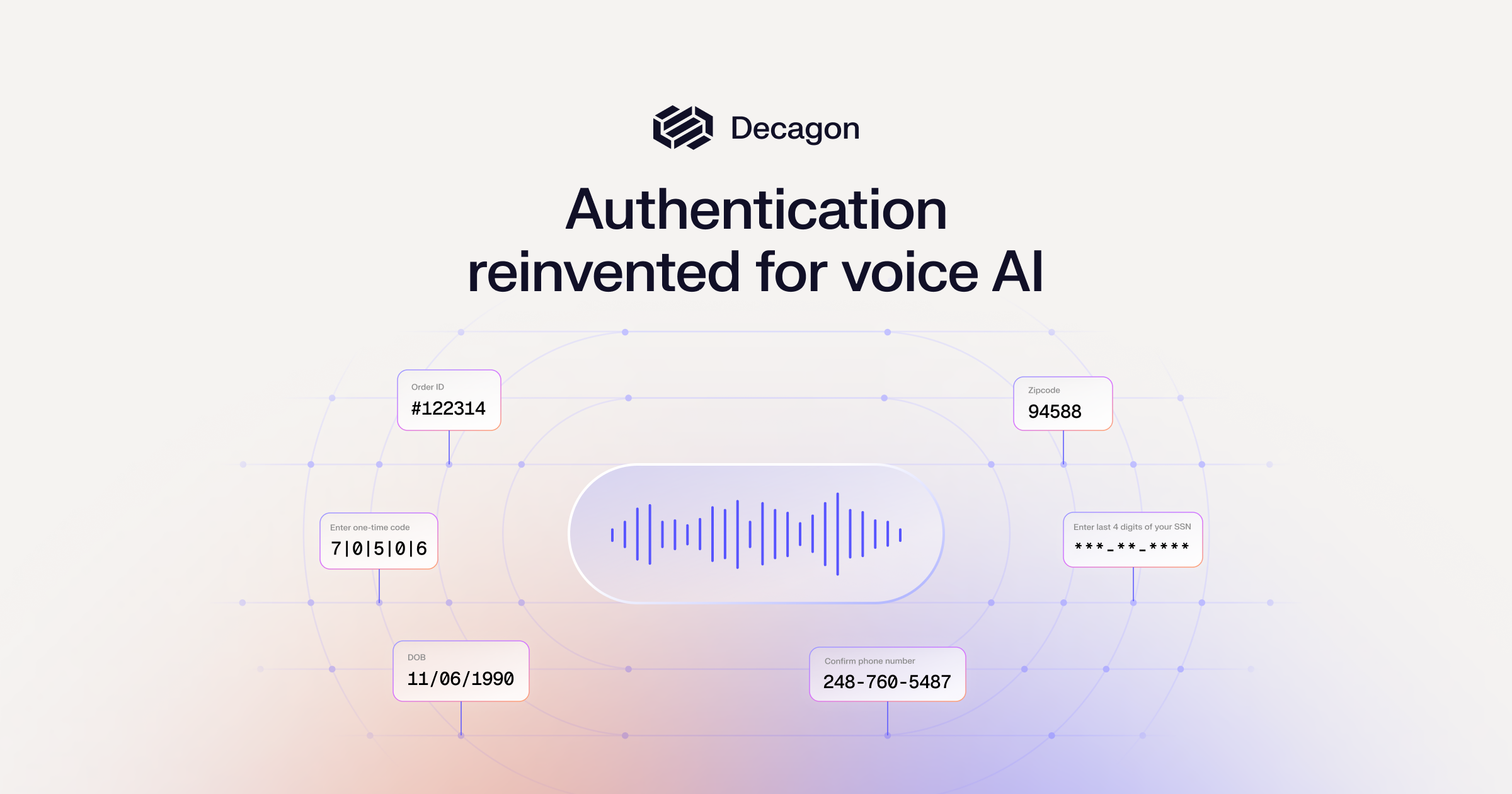AI customer service challenges and solutions: A playbook
High deflection rates can hide customer rage and brand damage. Learn the controls that prevent escalation patterns, eval harnesses, and latency budgets

When AI automation metrics show a 78% ticket deflection rate, your team should be celebrating, right? Then why does it feel like you’re just waiting for the other shoe to drop?
The pressure is on to hit ambitious automation targets to manage costs and improve efficiency. But every conversation your chatbot handles is a chance for things to go sideways. One screenshot of your chatbot giving bizarre advice or trapping a frustrated customer can instantly damage any reputation you’ve built.
That’s the core challenge of using AI chatbots today: bridging the gap between customer service automation targets and brand safety requirements. When success is measured by how many public disasters you avoid, you need systematic control more than you need a smarter model.
It doesn’t need to be either, or. It can be automation and happy customers. This guide is your operational playbook to get there. We’ll discuss the common challenges inherent in AI chatbot implementation and develop a framework for establishing systemic controls.
Why do chatbots fail?
Chatbots fail because they are designed to prioritize deflection metrics over successful escalation paths, trapping frustrated customers in loops when they desperately need human assistance.
This core design flaw means a chatbot's success is often directly responsible for a customer's negative experience.
The primary points of failure stem from these conflicts:
- Metric misalignment: Performance is measured by deflection rate, or keeping users away from agents, while ignoring critical indicators like escalation failure rate, intent recognition accuracy, CSAT, and the average time-to-human assistance.
- Poor escalation logic: This creates the most common pain point, where customers are stuck in conversation loops, desperately typing "AGENT" or "HUMAN" with no escape. The system is unable to recognize when it is failing and a handoff is required.
- Technical routing errors: Failures in intent misclassification or broken backend integrations prevent the bot from correctly identifying a user's problem and routing them to the right human agent, leading to a dead end.
What are the problems with AI chatbots?
AI chatbots struggle with accurate information retrieval, refuse to escalate to humans when needed, and introduce latency through necessary safety measures, causing customer frustration when confidence thresholds aren't properly configured.
Many of these failures happen because traditional chatbots are too open-ended. This freedom can lead them to invent facts, or "hallucinate," which erodes trust. They also lack emotional intelligence, relying on simple keywords to detect frustration instead of understanding sarcasm or nuance.
A safer approach uses action-constrained AI agents, which are limited to performing specific, verified operations. These agents can understand the context of a conversation and escalate as soon as they sense that human intervention is the best solution.
To prevent hallucinations, legacy platforms add multiple safety guardrails. While these are important, each check adds a delay, turning an "instant" reply into a multi-second wait. Teams are forced to trade speed for safety.
Furthermore, implementing these rules often requires developers to write code. This creates a bottleneck, preventing CX managers, who know customers best, from making quick adjustments. Platforms like Decagon solve this by allowing CX teams to manage AI agents with natural language. This empowers the true experts to build efficient processes, delivering both speed and accuracy without compromise.
What causes chatbot hallucinations?
Chatbot hallucinations occur when language models generate statistically likely but factually incorrect responses based on patterns in their training data rather than verified information. A language model's primary job is to predict the next plausible word in a sentence, not to confirm factual accuracy. This is why an open-ended bot might confidently invent an answer.
The most effective solution here is architectural. Instead of hoping training prevents errors, you constrain the agent to a trusted knowledge base and pre-defined actions.
For instance, Decagon uses retrieval-augmented generation (RAG) to ensure agents only pull from verified data. Tools like Watchtower add another layer of safety, analyzing every customer conversation in real-time, using customizable and context-aware criteria to flag risks and uncover actionable insights.
Knowledge base decay: when more data makes answers worse
It seems logical that adding more information to your chatbot’s knowledge base would make it smarter, but the opposite can often be true. As you add more documents over time, you can unintentionally introduce conflicting policies, outdated product details, and redundant information.
This problem is known as “knowledge-base rot.” The bloat makes it harder for the AI to find the single correct answer, which can cause retrieval precision to drop and lead to more confusing or incorrect responses.
The key to preventing this degradation is diligent maintenance. Regularly updating content, archiving out-of-date material, and keeping your knowledge base clean and concise is critical for maintaining your chatbot’s long-term accuracy and effectiveness.
Data privacy and compliance requirements
Handling customer conversations with AI introduces significant data privacy and compliance responsibilities. Global regulations like Europe’s GDPR and California’s CCPA set strict rules that require businesses to get explicit customer consent for AI interactions, provide clear opt-out options, and honor the right to data deletion.
Beyond these laws, a strong internal framework is crucial. This includes defining clear data retention policies that determine how long conversations are stored and establishing protocols for handling Personally Identifiable Information (PII). For global operations, requirements for cross-border data flows, such as EU data residency, must also be addressed.
Maintaining detailed audit trails of conversations and decisions is also essential for proving compliance. Decagon’s Watchtower can automate this protection by providing real-time PII detection and redaction, ensuring sensitive data is handled correctly from the start.
Understanding these challenges, from hallucinations to compliance risks, is the first step. Now, let's explore the practical solutions and frameworks you can implement to build a safe and effective AI customer service strategy.
Best practices for a positive customer experience
To ensure a positive customer experience with your chatbot, focus on these key practices:
- Set clear expectations: The bot should immediately introduce itself and clearly state its capabilities and limitations.
- Provide a constant escape hatch: Always give customers a simple and easily accessible option to escalate to a human agent at any point in the conversation.
- Communicate with empathy: When the bot can’t help, use understanding language. For example, "I understand this is frustrating. Let me connect you with someone who can help."
- Use progressive disclosure: Start interactions with simple choices and only reveal more complex options as needed to avoid overwhelming the user.
- Focus on resolution over conversation: Prioritize an action-oriented approach that helps customers complete tasks efficiently, as this is their primary goal.
- Implement with A/B testing: Roll out new automated flows gradually to a small percentage of users to test and refine performance before a full deployment.
Training your AI on company knowledge
Training an AI agent is like teaching a new employee, and the quality of its performance depends entirely on the quality of its training materials. Your knowledge base must be structured for AI consumption using clear formats like FAQs, decision trees, and standardized API documentation. Internal policies should be written with simple if/then rules that define exceptions and escalation triggers.
Don't try to teach the AI everything at once. A great starting point is to focus on the top 20% of queries that drive 80% of your support volume, organizing this content into clear intent categories like "Billing" or "Returns."
Maintaining this knowledge is an ongoing process. Use version control to track policy changes and establish a regular update cadence, such as weekly minor updates and quarterly audits. Before any new content goes live, it must be validated by a subject matter expert.
What's involved in setting up an AI agent with Decagon?
Setting up an AI agent with Decagon is a collaborative, white-glove process. Our experts guide you through this structured timeline to ensure a successful launch:
Week 1: Discovery and setup. We conduct a technical discovery, set up your sandbox environment, and document your existing support workflows.
Week 2: Planning and kick-off. We hold the official project kick-off, begin drafting Agent Operating Procedures (AOPs), and define clear success criteria for the pilot.
Week 3: Configuration and internal testing. We configure the agent with core routing rules and escalation paths and begin internal testing of primary workflows.
Week 4: Integration testing and refinement. We test all integrations and edge cases while refining the AOPs based on early feedback and results.
Week 5: Finalization and training. We merge all testing insights, finalize configurations, complete compliance documentation, and train your team on monitoring.
Week 6: Controlled launch and monitoring. We launch with a controlled rollout, monitor performance in real time, and make rapid adjustments before scaling.
Post launch, our partnership continues with daily monitoring and weekly AOP refinements to drive continuous improvement and expansion to new workflows.
How to prevent chatbot failures?
You can prevent chatbot failures by implementing confidence thresholds that trigger human handoff when retrieval quality drops, combined with nightly evaluation suites that test for accuracy and appropriate escalation.
This strategy is built on the principle of controlled failure, which means it is always better for a bot to admit it doesn't know an answer and escalate than to provide a wrong one. Your implementation priority should be – first, perfect the escalation path, second, improve accuracy, and finally, optimize for speed.
A robust control framework includes several key components, including:
- Automated nightly testing. Run tests every night using a suite of input/output pairs, known edge cases, and regression checks to catch new errors before they impact users.
- Clear success metrics. Track metrics beyond deflection, such as escalation success rate, containment percentage (how often the bot correctly handled the query without escalating), and false positive rates.
- Ready rollback procedures. Have a clear plan for when to revert to a previous version if an update causes problems, including a communication plan for your team.
For example, Decagon’s AOPs allow you to set these precise controls using natural language, giving you code-level control without needing to be a developer.
Your path from crisis manager to strategic operator
Moving beyond the daily anxiety of chatbot failures means shifting from a reactive crisis manager to a strategic operator. Instead of explaining what went wrong, you can demonstrate a system of control.
Your path forward begins with a few immediate actions: audit your current escalation paths, document your most common failure patterns, and establish baseline metrics for success.
This transformation from fighting fires to preventing them is possible with the right infrastructure. Decagon’s Agent Operating Procedures and Watchtower provide the precise controls you need to automate with confidence.
Ready to build a system you can trust? Get a demo of Decagon today.
AI customer service challenges and solutions: A playbook
September 2, 2025

When AI automation metrics show a 78% ticket deflection rate, your team should be celebrating, right? Then why does it feel like you’re just waiting for the other shoe to drop?
The pressure is on to hit ambitious automation targets to manage costs and improve efficiency. But every conversation your chatbot handles is a chance for things to go sideways. One screenshot of your chatbot giving bizarre advice or trapping a frustrated customer can instantly damage any reputation you’ve built.
That’s the core challenge of using AI chatbots today: bridging the gap between customer service automation targets and brand safety requirements. When success is measured by how many public disasters you avoid, you need systematic control more than you need a smarter model.
It doesn’t need to be either, or. It can be automation and happy customers. This guide is your operational playbook to get there. We’ll discuss the common challenges inherent in AI chatbot implementation and develop a framework for establishing systemic controls.
Why do chatbots fail?
Chatbots fail because they are designed to prioritize deflection metrics over successful escalation paths, trapping frustrated customers in loops when they desperately need human assistance.
This core design flaw means a chatbot's success is often directly responsible for a customer's negative experience.
The primary points of failure stem from these conflicts:
- Metric misalignment: Performance is measured by deflection rate, or keeping users away from agents, while ignoring critical indicators like escalation failure rate, intent recognition accuracy, CSAT, and the average time-to-human assistance.
- Poor escalation logic: This creates the most common pain point, where customers are stuck in conversation loops, desperately typing "AGENT" or "HUMAN" with no escape. The system is unable to recognize when it is failing and a handoff is required.
- Technical routing errors: Failures in intent misclassification or broken backend integrations prevent the bot from correctly identifying a user's problem and routing them to the right human agent, leading to a dead end.
What are the problems with AI chatbots?
AI chatbots struggle with accurate information retrieval, refuse to escalate to humans when needed, and introduce latency through necessary safety measures, causing customer frustration when confidence thresholds aren't properly configured.
Many of these failures happen because traditional chatbots are too open-ended. This freedom can lead them to invent facts, or "hallucinate," which erodes trust. They also lack emotional intelligence, relying on simple keywords to detect frustration instead of understanding sarcasm or nuance.
A safer approach uses action-constrained AI agents, which are limited to performing specific, verified operations. These agents can understand the context of a conversation and escalate as soon as they sense that human intervention is the best solution.
To prevent hallucinations, legacy platforms add multiple safety guardrails. While these are important, each check adds a delay, turning an "instant" reply into a multi-second wait. Teams are forced to trade speed for safety.
Furthermore, implementing these rules often requires developers to write code. This creates a bottleneck, preventing CX managers, who know customers best, from making quick adjustments. Platforms like Decagon solve this by allowing CX teams to manage AI agents with natural language. This empowers the true experts to build efficient processes, delivering both speed and accuracy without compromise.
What causes chatbot hallucinations?
Chatbot hallucinations occur when language models generate statistically likely but factually incorrect responses based on patterns in their training data rather than verified information. A language model's primary job is to predict the next plausible word in a sentence, not to confirm factual accuracy. This is why an open-ended bot might confidently invent an answer.
The most effective solution here is architectural. Instead of hoping training prevents errors, you constrain the agent to a trusted knowledge base and pre-defined actions.
For instance, Decagon uses retrieval-augmented generation (RAG) to ensure agents only pull from verified data. Tools like Watchtower add another layer of safety, analyzing every customer conversation in real-time, using customizable and context-aware criteria to flag risks and uncover actionable insights.
Knowledge base decay: when more data makes answers worse
It seems logical that adding more information to your chatbot’s knowledge base would make it smarter, but the opposite can often be true. As you add more documents over time, you can unintentionally introduce conflicting policies, outdated product details, and redundant information.
This problem is known as “knowledge-base rot.” The bloat makes it harder for the AI to find the single correct answer, which can cause retrieval precision to drop and lead to more confusing or incorrect responses.
The key to preventing this degradation is diligent maintenance. Regularly updating content, archiving out-of-date material, and keeping your knowledge base clean and concise is critical for maintaining your chatbot’s long-term accuracy and effectiveness.
Data privacy and compliance requirements
Handling customer conversations with AI introduces significant data privacy and compliance responsibilities. Global regulations like Europe’s GDPR and California’s CCPA set strict rules that require businesses to get explicit customer consent for AI interactions, provide clear opt-out options, and honor the right to data deletion.
Beyond these laws, a strong internal framework is crucial. This includes defining clear data retention policies that determine how long conversations are stored and establishing protocols for handling Personally Identifiable Information (PII). For global operations, requirements for cross-border data flows, such as EU data residency, must also be addressed.
Maintaining detailed audit trails of conversations and decisions is also essential for proving compliance. Decagon’s Watchtower can automate this protection by providing real-time PII detection and redaction, ensuring sensitive data is handled correctly from the start.
Understanding these challenges, from hallucinations to compliance risks, is the first step. Now, let's explore the practical solutions and frameworks you can implement to build a safe and effective AI customer service strategy.
Best practices for a positive customer experience
To ensure a positive customer experience with your chatbot, focus on these key practices:
- Set clear expectations: The bot should immediately introduce itself and clearly state its capabilities and limitations.
- Provide a constant escape hatch: Always give customers a simple and easily accessible option to escalate to a human agent at any point in the conversation.
- Communicate with empathy: When the bot can’t help, use understanding language. For example, "I understand this is frustrating. Let me connect you with someone who can help."
- Use progressive disclosure: Start interactions with simple choices and only reveal more complex options as needed to avoid overwhelming the user.
- Focus on resolution over conversation: Prioritize an action-oriented approach that helps customers complete tasks efficiently, as this is their primary goal.
- Implement with A/B testing: Roll out new automated flows gradually to a small percentage of users to test and refine performance before a full deployment.
Training your AI on company knowledge
Training an AI agent is like teaching a new employee, and the quality of its performance depends entirely on the quality of its training materials. Your knowledge base must be structured for AI consumption using clear formats like FAQs, decision trees, and standardized API documentation. Internal policies should be written with simple if/then rules that define exceptions and escalation triggers.
Don't try to teach the AI everything at once. A great starting point is to focus on the top 20% of queries that drive 80% of your support volume, organizing this content into clear intent categories like "Billing" or "Returns."
Maintaining this knowledge is an ongoing process. Use version control to track policy changes and establish a regular update cadence, such as weekly minor updates and quarterly audits. Before any new content goes live, it must be validated by a subject matter expert.
What's involved in setting up an AI agent with Decagon?
Setting up an AI agent with Decagon is a collaborative, white-glove process. Our experts guide you through this structured timeline to ensure a successful launch:
Week 1: Discovery and setup. We conduct a technical discovery, set up your sandbox environment, and document your existing support workflows.
Week 2: Planning and kick-off. We hold the official project kick-off, begin drafting Agent Operating Procedures (AOPs), and define clear success criteria for the pilot.
Week 3: Configuration and internal testing. We configure the agent with core routing rules and escalation paths and begin internal testing of primary workflows.
Week 4: Integration testing and refinement. We test all integrations and edge cases while refining the AOPs based on early feedback and results.
Week 5: Finalization and training. We merge all testing insights, finalize configurations, complete compliance documentation, and train your team on monitoring.
Week 6: Controlled launch and monitoring. We launch with a controlled rollout, monitor performance in real time, and make rapid adjustments before scaling.
Post launch, our partnership continues with daily monitoring and weekly AOP refinements to drive continuous improvement and expansion to new workflows.
How to prevent chatbot failures?
You can prevent chatbot failures by implementing confidence thresholds that trigger human handoff when retrieval quality drops, combined with nightly evaluation suites that test for accuracy and appropriate escalation.
This strategy is built on the principle of controlled failure, which means it is always better for a bot to admit it doesn't know an answer and escalate than to provide a wrong one. Your implementation priority should be – first, perfect the escalation path, second, improve accuracy, and finally, optimize for speed.
A robust control framework includes several key components, including:
- Automated nightly testing. Run tests every night using a suite of input/output pairs, known edge cases, and regression checks to catch new errors before they impact users.
- Clear success metrics. Track metrics beyond deflection, such as escalation success rate, containment percentage (how often the bot correctly handled the query without escalating), and false positive rates.
- Ready rollback procedures. Have a clear plan for when to revert to a previous version if an update causes problems, including a communication plan for your team.
For example, Decagon’s AOPs allow you to set these precise controls using natural language, giving you code-level control without needing to be a developer.
Your path from crisis manager to strategic operator
Moving beyond the daily anxiety of chatbot failures means shifting from a reactive crisis manager to a strategic operator. Instead of explaining what went wrong, you can demonstrate a system of control.
Your path forward begins with a few immediate actions: audit your current escalation paths, document your most common failure patterns, and establish baseline metrics for success.
This transformation from fighting fires to preventing them is possible with the right infrastructure. Decagon’s Agent Operating Procedures and Watchtower provide the precise controls you need to automate with confidence.
Ready to build a system you can trust? Get a demo of Decagon today.





